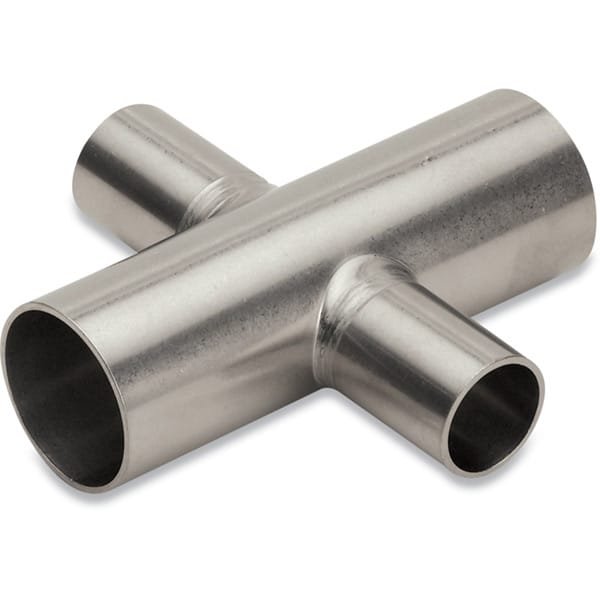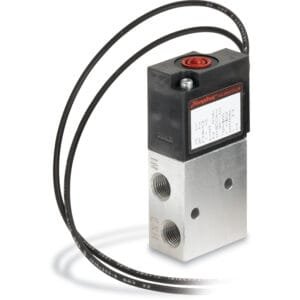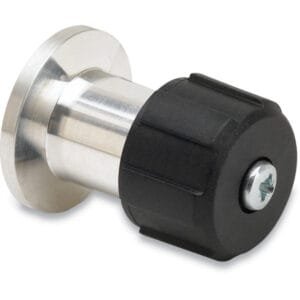Weldable Tube Reducer Crosses for High-Vacuum and Semiconductor Systems
Weldable Tube Reducer Crosses from TFM are engineered to meet the stringent demands of ultra-high vacuum (UHV) environments and semiconductor process systems. Fabricated from 304 series stainless steel, these reducer crosses are ideal for roughing lines, foreline assemblies, and pump exhaust routes in cleanroom and subfab installations.
These fittings are a specialized variant of our weldable cross tube fittings, with a key differentiator—their reducer design, which allows connection between two different tube sizes within a single cross fitting. This feature offers exceptional system design flexibility, especially when interfacing components across varying process scales.
Each weldable reducer cross is manufactured using the pulled-port technique and completed with full-penetration butt welds. This method ensures crevice-free joints, a critical requirement for contamination-sensitive processes where particle generation must be minimized. The internal surfaces are cleaned and processed to achieve vacuum performance levels as low as 1×10⁻¹³ Torr, making them suitable for even the most demanding UHV systems.
The fittings are capable of withstanding extreme thermal cycling, with a working temperature range from –200°C to 450°C. This makes them not only suitable for ambient semiconductor processes but also for cryogenic or high-temperature environments commonly found in plasma processing, PVD, or CVD systems.
Key Features of Weldable Tube Reducer Crosses:
Material: Fabricated from high-purity 304 stainless steel.
Reducer Geometry: Designed to connect tubes of different diameters, ensuring seamless transitions in complex vacuum piping layouts.
UHV-Ready: Cleaned to support vacuum levels down to >10⁻¹³ Torr.
Butt Weld Integrity: Features full-penetration welds using the pulled-port method for superior joint strength.
Crevice-Free Design: Prevents contamination and particle traps.
Thermal Compatibility: Operates reliably from –200°C to 450°C.
Custom Options: Available with non-standard tube sizes or wall thicknesses; flanged reducer crosses can also be provided upon request.
Common Applications:
Semiconductor vacuum plumbing systems
High-vacuum pump exhaust lines
UHV scientific instrumentation and research setups
Integrated systems for process gas distribution
Thermal processing equipment requiring variable tube size connections
Whether you’re building a new vacuum manifold or upgrading existing semiconductor tooling, TFM’s Weldable Tube Reducer Crosses offer the clean, durable, and configurable solution your system requires.





Reviews
There are no reviews yet.